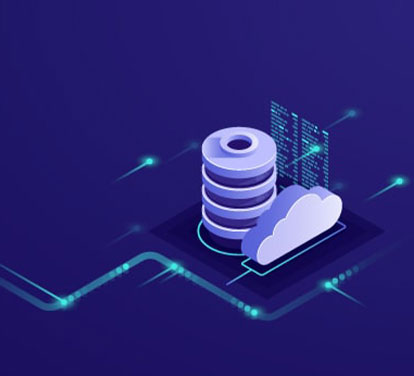Shifting from selling products to services brings challenges: innovating subscription-based businesses, beating competitors and adjusting pricing. Billing and Revenue Innovation Management (BRIM) provides a versatile solution, seamlessly integrating with SAP for companies moving into XaaS transformations.
Data migration is a critical part of the implementation process and requires careful planning and execution to ensure a smooth transition. SAP BRIM implementation is no different. The success of the project depends on the quality of the data.
Data Migration Objects for SAP BRIM Implementation
- Product Master
- Business Partners
- Contract Account
- Class and Characteristics
- Pricing
- Subscription Orders
- Solution Quotations
- Subscription Contracts/Provider Contracts
- Product Bundles
- Open Items
- Billable Items
- Consumption Items.
Here are some best practices for data migration in SAP BRIM implementation
- Data Assessment and Planning:
- Assess the existing data: Understand the structure, quality, and volume of data in the current systems. Identify critical data objects that need to be migrated.
- Define migration goals: Clearly define what data needs to be migrated, what can be archived, and what can be discarded. Establish specific goals and objectives for the migration process. Prepare/plan the data migration approach and strategy.
- Data Cleansing and Transformation:
- Cleanse and standardize data: Cleanse the data to remove duplicates, inconsistencies, and errors. Standardize formats and naming conventions for consistency.
- Transform data: Convert data formats, map fields between systems, and ensure that data in the new system aligns with the BRIM data model.
- Data Mapping and Migration Tools:
- Create a data mapping document: Document the mapping between source and target data elements. This document serves as a reference during the migration process.
- Use migration tools: Leverage data migration tools and software that can automate the process, validate data integrity, and handle large volumes of data efficiently.
Some of the SAP Tools for Data Migration are:
- Migration Cockpit: This is a tool used for data migration in SAP S/4HANA. It provides a user interface for managing the data migration process and includes pre-defined migration objects.
- SAP Data Services: SAP Data Services is a data integration and transformation tool that can be used for data migration. It supports extraction, transformation, and loading (ETL) processes.
- SAP Information Steward: This tool helps ensure the quality of data during the migration process by providing data profiling, cleansing, and monitoring capabilities.
- Migration Tools with special Focus: EMIGALL/ISMW(Industry Solutions Migration Workbench) is a IS-U tool to migrate legacy data into S/4HANA system. It is an Expert Tool.
- Data Validation and Testing:
- Validate data accuracy: Implement validation checks to ensure data accuracy pre and post migration. Perform data reconciliation to identify discrepancies.
- Conduct testing: Develop test cases and perform comprehensive testing to validate the migrated data. Include end-users in the validation process to confirm that the data meets their requirements.
- Data Security and Compliance:
- Ensure data security: Implement appropriate security measures to protect sensitive data during migration. Use encryption and secure connections to transfer data between systems.
- Comply with regulations: Adhere to regulatory requirements and industry standards related to data privacy and security.
- Backup and Rollback Plan:
- Create backups: Take regular backups of the data before and during the migration process. Having backups ensures that you can revert to the previous state in case of unexpected issues.
- Develop a rollback plan: Prepare a contingency plan outlining the steps to revert to the old system if the migration encounters major issues. Test the rollback plan to ensure its effectiveness.
- Data Governance and Documentation:
- Establish data governance: Define roles and responsibilities for managing data throughout the migration process. Clearly document data ownership and stewardship.
- Document the migration process: Maintain detailed documentation of the migration process, including data mapping, validation results, issues encountered, and their resolutions.
- Communication and Stakeholder Involvement:
- Communicate transparently: Keep stakeholders informed about the migration progress, potential challenges, and timelines. Address concerns and queries promptly to maintain trust.
- Involve stakeholders: Involve key stakeholders, including end-users and IT teams, in the migration process. Gather their input and feedback to ensure that migrated data meets their requirements.
- Post-Migration Support:
- Provide support: Offer post-migration support to address any issues or questions that arise after the migration is complete. Have a support team in place to assist users during the initial stages of using the new system.
- Continuous Monitoring and Optimization:
- Monitor data performance: Continuously monitor the performance of the migrated data in the BRIM system. Identify and address any performance bottlenecks or data-related issues.
- Optimize data processes: Regularly review data processes and identify opportunities for optimization. Implement improvements to enhance data quality and efficiency.
By following these best practices, we can increase the successful SAP data migration during BRIM implementation, ensuring that your organization's data is accurately transferred to the new system while maintaining data integrity and security.
Revolutionizing Revenue: An SAP BRIM Implementation Success Story
One of our valued American Cloud Computing and Virtualization clients sought our expertise at Jade Global. We harnessed the power of integrated billing data and customer-centric strategies, enabling a seamless shift from license-based models to subscription services. Through the integration of legacy CRM and e-commerce systems, we provided the company with a comprehensive 360-degree customer view.
With the implementation of SAP BRIM and Convergent Invoicing, our collaboration resulted in a remarkable 20% increase in revenue per customer. This strategic transition not only modernized their operations but also paved the way for success in high-volume, usage-based SaaS models. You can read our complete success story here.
Jade is an SAP implementation partner that you can completely trust, as we have helped several mid-size to large enterprises boost their business growth by automating and digitizing the billing and invoicing process.
Jade Expertise in SAP BRIM Services
- Subscription Order Management
- Convergent Charging
- Convergent Invoicing
- Document Management
- Integration with Contract Accounting
Jade specializes in implementing SAP BRIM across subscription order management, convergent charging, invoicing, and contract accounting integration. To know more – Read Here













